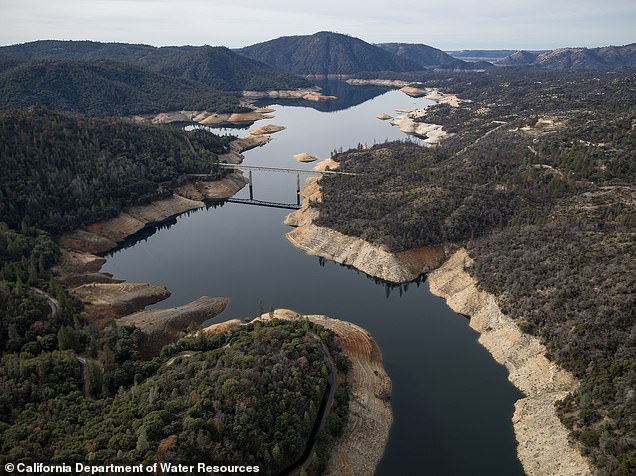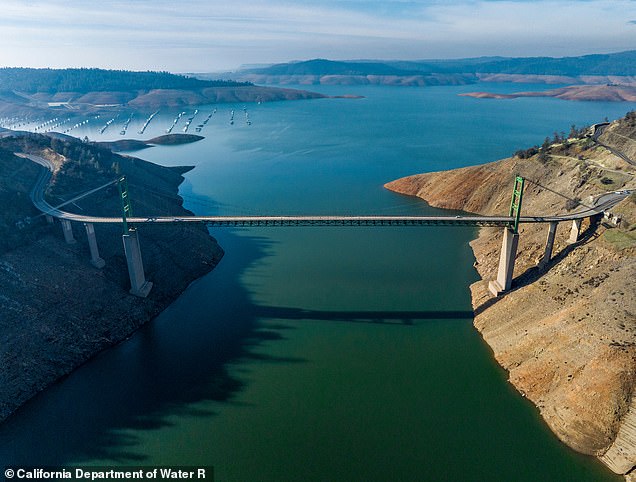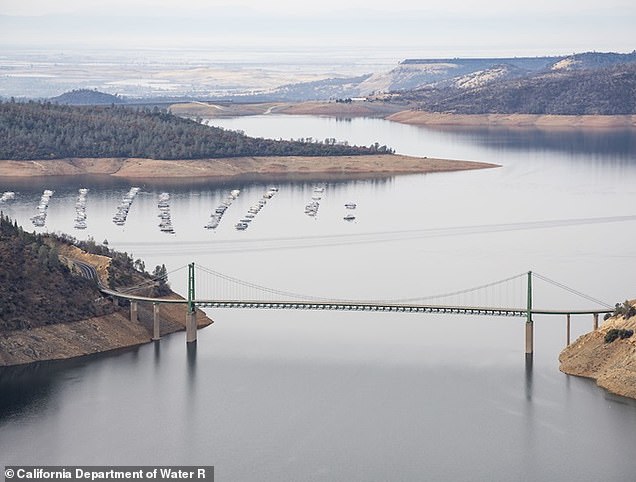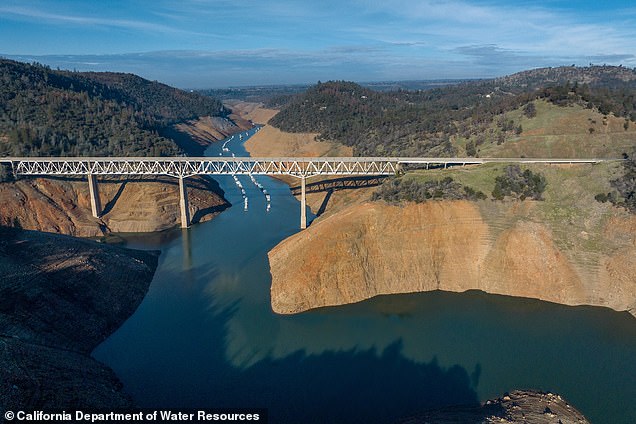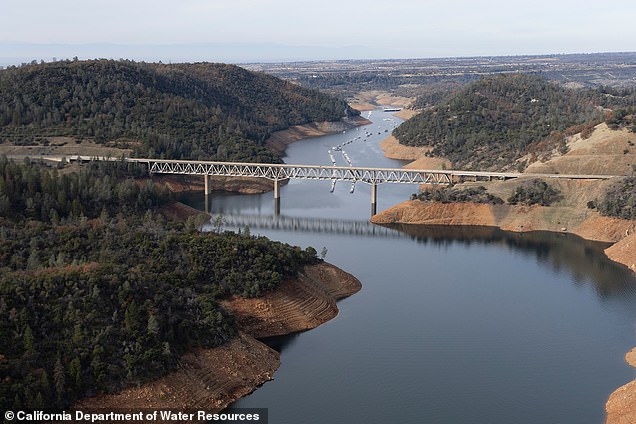Lake Oroville before and after: Shocking photos show the California water reservoir brimming after year of biblical rains, as new storm moves in
Dramatic photos of California's Lake Oroville show how the state's main reservoir has recovered from extremely low levels after a year of remarkably heavy rain and snow.
Earlier this week, the state's water reservoirs totaled about 64 percent capacity, well above the 30-year average of 55 percent for December, the Los Angeles Times reported.
Oroville and other reservoirs have benefited from one of the wettest years in state history, starting with heavy rain and snowfall last winter.
State officials measured 33.56 inches of precipitation through the end of September, marking the end of California's official “water year.”
On Saturday, a storm system moving in from the Pacific Ocean brought another round of rain to the state, with the heaviest rains forecast along the northern and central coasts, where localized flash flooding is possible.
Water conditions are seen at the Enterprise Bridge on Lake Oroville in Butte County, California on December 21, 2022 (left) and December 14, 2023 (right)
California gets most of its rain and snow in the fall and winter months, and the state depends on those wet months to fill its reservoirs that provide water for drinking, agricultural and environmental uses throughout the state.
These reservoirs have fallen to dangerously low levels in recent years due to an extreme drought. That led to water restrictions for homes and businesses and limited supplies to farmers.
It also threatened already endangered fish species, including salmon, which require cold water in rivers to survive.
However, California's new 'water year', which started on October 1, has gotten off to a relatively dry start, raising concerns even as reservoirs remain at high levels.
State officials said earlier this month that California water agencies serving 27 million people will get 10 percent of requested water from state supplies starting in 2024 because of a relatively dry fall.
The state Department of Water Resources said there was not much rain or snow in October and November. Those months are critical for developing the initial water allocation, which can be increased if conditions improve, officials said.
“California's water year is off to a relatively dry start,” Karla Nemeth, director of the Department of Water Resources, said in a statement. “While we are hopeful that this El Niño pattern will bring wet weather, we should plan for this early in the season with drier conditions in mind.”
El Niño is a periodic and naturally occurring climate event that changes weather patterns around the world. It can cause extreme weather events ranging from drought to floods. It hits hardest in December through February.
Water conditions at the Bidwell Bar Bridge on Lake Oroville are seen on December 21, 2022 (left) and December 14, 2023 (right)
Conditions of the West Branch Feather River Bridge on Lake Oroville are seen on December 21, 2022 (left) and December 14, 2023 (right)
Much of California's water supply comes from snow that falls in the mountains in the winter and flows into the watershed as it melts in the spring. Some is stored in reservoirs for later use, while another is sent south via huge pumping systems.
The system, known as the State Water Project, provides water to two-thirds of the state's population and 1,172 square kilometers of agricultural land.
The Metropolitan Water District of Southern California, which serves Los Angeles and much of Southern California, depends on the state for about a third of its water supply.
California officials make initial water allocations on December 1 each year and update them monthly in response to snowfall, rainfall and other conditions.
Although this year's allocation is low, it is still better than in recent years when the state was in the depths of a three-year drought.
In December 2021, agencies were told that they would not receive government supplies beyond what was needed for basic health and safety to begin 2022. That allocation ultimately went up slightly.
A year ago, the state granted 5 percent of what the agencies requested. But in April, the state increased that allocation to 100 percent, following a series of winter storms that hit drought conditions and filled the state's reservoirs.

